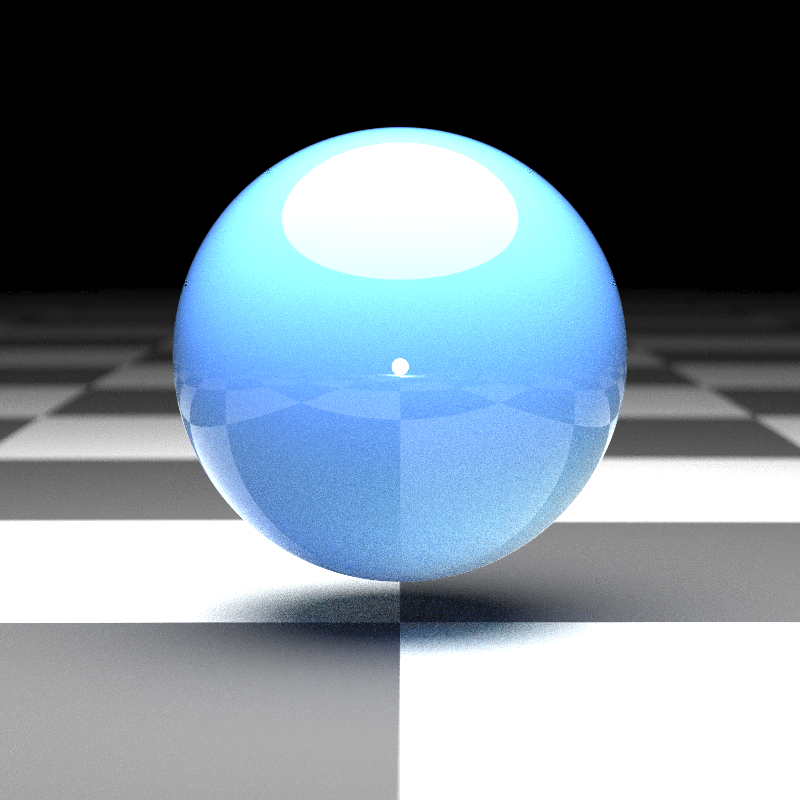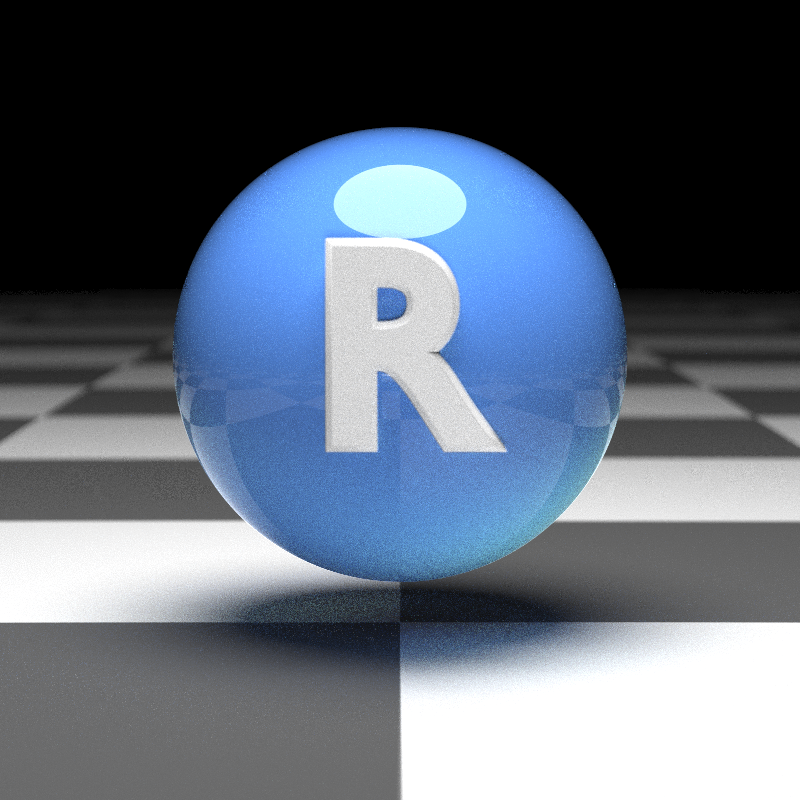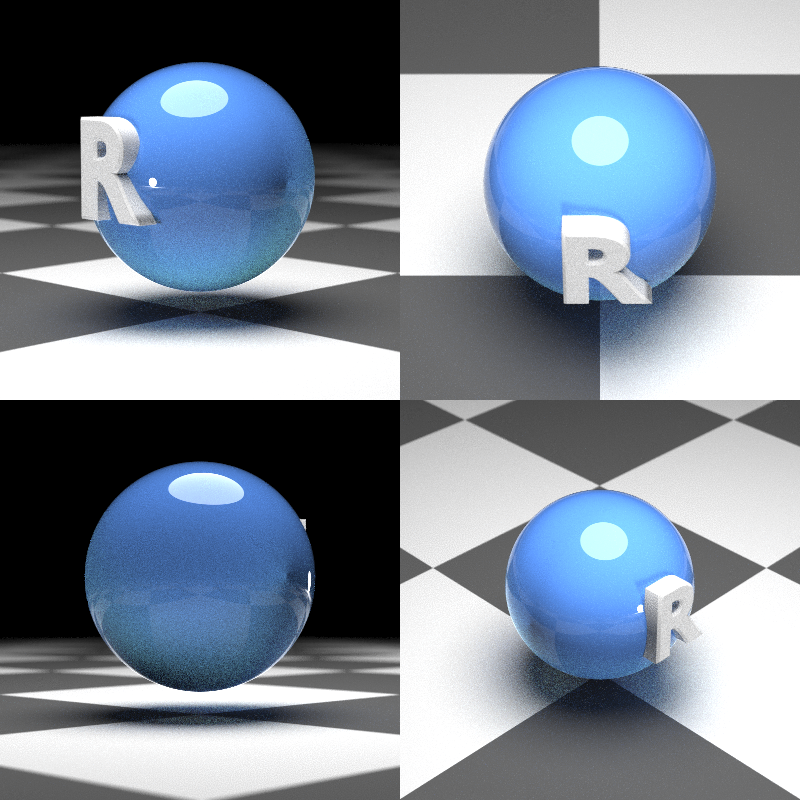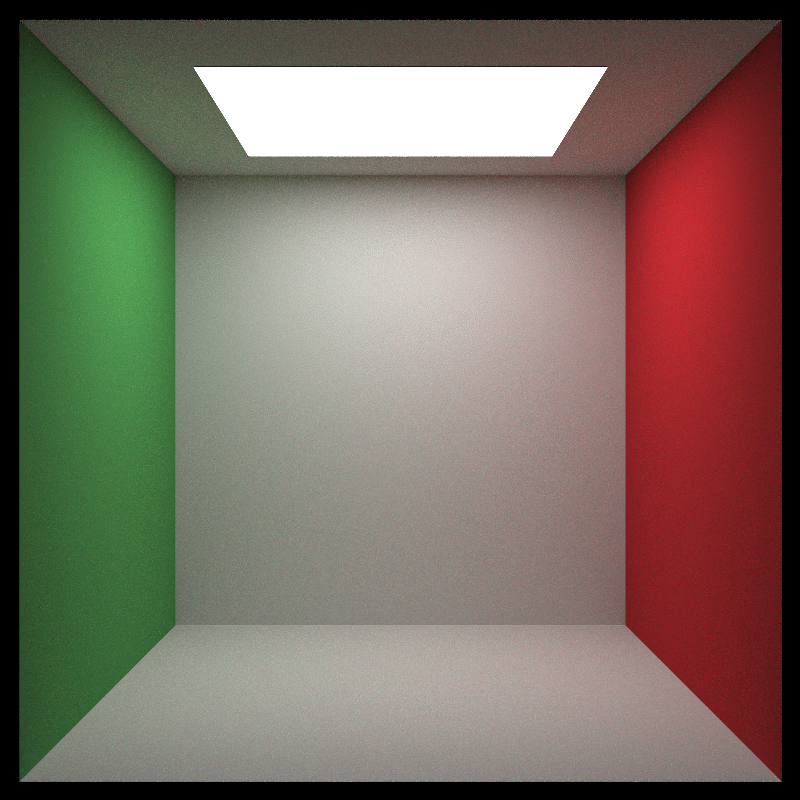rayrender is an open source R package for raytracing scenes in
created in R. Based off of Peter Shirley’s three books “Ray Tracing in
One Weekend”, “Ray Tracing: The Next Week”, and “Ray Tracing: The Rest
of Your Life”, this package provides a tidy R API to a raytracer built
in C++ to render scenes built out of an array of primitives.
rayrender builds scenes using a pipeable iterative interface, and
supports diffuse, metallic, dielectric (glass), light emitting
materials, as well as procedural and user-specified image textures and
HDR environment lighting. rayrender includes multicore support (with
progress bars) via RcppThread, random number generation via the PCG RNG,
and .obj file support via TinyObjLoader.
Browse the documentation and see more examples at the website (if you aren’t already there):
# To install the latest version from Github:
# install.packages("devtools")
devtools::install_github("tylermorganwall/rayrender")We’ll first start by rendering a simple scene consisting of the ground,
a sphere, and the included R.obj file. The location of the R.obj
file can be accessed by calling the function r_obj(). First adding the
ground using the render_ground() function. This renders an extremely
large sphere that (at our scene’s scale) functions as a flat surface. We
also add a simple blue sphere to the scene.
library(rayrender)
scene = generate_ground(material=diffuse(checkercolor="grey20")) %>%
add_object(sphere(y=0.2,material=glossy(color="#2b6eff",reflectance=0.05)))
render_scene(scene, parallel = TRUE, width = 800, height = 800, samples = 1000)By default, a scene without any lights includes a blue sky. We can turn
this off either by setting ambient_light = FALSE, or by adding a light
to our scene. We will add an emissive sphere above and behind our
camera.
scene = generate_ground(material=diffuse(checkercolor="grey20")) %>%
add_object(sphere(y=0.2,material=glossy(color="#2b6eff",reflectance=0.05))) %>%
add_object(sphere(y=6,z=1,radius=4,material=light(intensity=8))) %>%
add_object(sphere(z=15,material=light(intensity=70)))
render_scene(scene, parallel = TRUE, width = 800, height = 800, samples = 1000, clamp_value=10)Now we’ll add the (included) R .obj file into the scene, using the
obj_model() function. We will scale it down slightly using the
scale_obj argument, and then embed it on the surface of the ball.
scene = generate_ground(material=diffuse(checkercolor="grey20")) %>%
add_object(sphere(y=0.2,material=glossy(color="#2b6eff",reflectance=0.05))) %>%
add_object(obj_model(r_obj(),z=1,y=-0.05,scale_obj=0.45,material=diffuse())) %>%
add_object(sphere(y=10,z=1,radius=4,material=light(intensity=8))) %>%
add_object(sphere(z=15,material=light(intensity=70)))
render_scene(scene, parallel = TRUE, width = 800, height = 800, samples = 1000, clamp_value=10)Here we’ll render a grid of different viewpoints.
par(mfrow=c(2,2))
render_scene(scene, parallel = TRUE, width = 400, height = 400,
lookfrom = c(7,1,7), samples = 1000, clamp_value=10)
render_scene(scene, parallel = TRUE, width = 400, height = 400,
lookfrom = c(0,7,7), samples = 1000, clamp_value=10)
render_scene(scene, parallel = TRUE, width = 400, height = 400,
lookfrom = c(-7,0,-7), samples = 1000, clamp_value=10)
render_scene(scene, parallel = TRUE, width = 400, height = 400,
lookfrom = c(-7,7,7), samples = 1000, clamp_value=10)par(mfrow=c(1,1))Here’s another example: We start by generating an empty Cornell box and
rendering it with render_scene(). Setting parallel = TRUE will
utilize all available cores on your machine. The lookat, lookfrom,
aperture, and fov arguments control the camera, and the samples
argument controls how many samples to take at each pixel. Higher sample
counts result in a less noisy image.
scene = generate_cornell()
render_scene(scene, lookfrom=c(278,278,-800),lookat = c(278,278,0), aperture=0, fov=40, samples = 1000,
ambient_light=FALSE, parallel=TRUE, width=800, height=800, clamp_value = 5)Here we add a metal ellipsoid, a checkered purple cube, a colored glass
sphere, a pig, and plaster the walls with the iris dataset using
textures applied to rectangles. We first write the textures out to a
temporary filename, and then read the image back in using the
png::readPNG() function. We then pass this to the image argument in
the diffuse material, which applies it as a texture.
tempfileplot = tempfile()
png(filename=tempfileplot,height=1600,width=1600)
plot(iris$Petal.Length,iris$Sepal.Width,col=iris$Species,pch=18,cex=12)
dev.off()## quartz_off_screen
## 2
image_array = png::readPNG(tempfileplot)
generate_cornell() %>%
add_object(ellipsoid(x=555/2,y=100,z=555/2,a=50,b=100,c=50, material = metal(color="lightblue"))) %>%
add_object(cube(x=100,y=130/2,z=200,xwidth = 130,ywidth=130,zwidth = 130,
material=diffuse(checkercolor="purple", checkerperiod = 30),angle=c(0,10,0))) %>%
add_object(pig(x=100,y=190,z=200,scale=40,angle=c(0,30,0))) %>%
add_object(sphere(x=420,y=555/8,z=100,radius=555/8,
material = dielectric(color="orange"))) %>%
add_object(yz_rect(x=0.01,y=300,z=555/2,zwidth=400,ywidth=400,
material = diffuse(image_texture = image_array))) %>%
add_object(yz_rect(x=555/2,y=300,z=555-0.01,zwidth=400,ywidth=400,
material = diffuse(image_texture = image_array),angle=c(0,90,0))) %>%
add_object(yz_rect(x=555-0.01,y=300,z=555/2,zwidth=400,ywidth=400,
material = diffuse(image_texture = image_array),angle=c(0,180,0))) %>%
render_scene(lookfrom=c(278,278,-800),lookat = c(278,278,0), aperture=0, fov=40, samples = 1000,
ambient_light=FALSE, parallel=TRUE, width=800, height=800, clamp_value = 5)Rayrender also has an interface to create objects using constructive solid geometry, with a wide variety of primitives and operations.
generate_ground(material=diffuse(checkercolor="grey20")) %>%
add_object(csg_object(csg_combine(
csg_combine(
csg_box(),
csg_sphere(radius=0.707),
operation="intersection"),
csg_group(list(csg_cylinder(start=c(-1,0,0), end=c(1,0,0), radius=0.4),
csg_cylinder(start=c(0,-1,0), end=c(0,1,0), radius=0.4),
csg_cylinder(start=c(0,0,-1), end=c(0,0,1), radius=0.4))),
operation="subtract"),
material=glossy(color="red"))) %>%
add_object(csg_object(csg_translate(csg_combine(
csg_onion(csg_onion(csg_onion(csg_sphere(radius=0.3), 0.2), 0.1),0.05),
csg_box(y=1,width=c(10,2,10)), operation = "subtract"), x=1.3),
material=glossy(color="purple"))) %>%
add_object(csg_object(csg_combine(
csg_sphere(x=-1.2,z=-0.3, y=0.5,radius = 0.4),
csg_sphere(x=-1.4,z=0.4, radius = 0.4), operation="blend", radius=0.5),
material=glossy(color="dodgerblue4"))) %>%
add_object(sphere(y=5,x=3,radius=1,material=light(intensity=30))) %>%
render_scene(clamp_value=10, fov=20,lookfrom=c(5,5,10),samples=1000,width=800,height=800)We can also use the path() element to draw 3D paths. Here, we render
the Lorenz attractor:
library(deSolve)
parameters = c(s = 10, r = 28, b = 8/3)
state = c(X = 1, Y = 0, Z = 1)
Lorenz = function(t, state, parameters) {
with(as.list(c(state, parameters)), {
dX = s * (Y - X)
dY = X * (r - Z) - Y
dZ = X * Y - b * Z
list(c(dX, dY, dZ))
})
}
times = seq(0, 50, by = 0.05)
vals = ode(y = state, times = times, func = Lorenz, parms = parameters)[,-1]
#scale and rearrange:
vals = vals[,c(1,3,2)]/20
generate_studio() %>%
add_object(path(points=vals,y=-0.6,width=0.01,material=diffuse(color="red"))) %>%
add_object(sphere(y=5,z=5,radius=0.5,material=light(intensity=200))) %>%
render_scene(samples=256,lookat=c(0,0.5,0),lookfrom=c(0,1,10),width = 800, height = 800,
clamp_value=10,parallel=TRUE)Finally, rayrender supports environment lighting with the
environment_light argument. Pass a high dynamic range image (.hdr)
or a low-dynamic range image (.jpg,.png) and the image will be used
to light the scene (along with any other lights). Here’s an example
using an HDR image of Venice at sunset (obtained for free from
hdrihaven.com), also using the Oren-Nayar diffuse model with sigma = 90 for a more realistic diffuse surface. We also add an extruded
polygon star, using the extruded_polygon object.
tempfilehdr = tempfile(fileext = ".hdr")
download.file("https://www.tylermw.com/data/venice_sunset_2k.hdr",tempfilehdr)
#Create star polygon
angles = seq(0,360,by=36)
xx = rev(c(rep(c(1,0.5),5),1) * sinpi(angles/180))
yy = rev(c(rep(c(1,0.5),5),1) * cospi(angles/180))
star_polygon = data.frame(x=xx,y=yy)
hollow_star = rbind(star_polygon,0.8*star_polygon)
generate_ground(material = diffuse(color="grey20", checkercolor = "grey50",sigma=90)) %>%
add_object(sphere(material=metal())) %>%
add_object(obj_model(y=-1,x=-1.8,r_obj(), angle=c(0,135,0),material = diffuse(sigma=90))) %>%
add_object(pig(x=1.8,y=-1.2,scale=0.5,angle=c(0,90,0),diffuse_sigma = 90)) %>%
add_object(extruded_polygon(hollow_star,top=-0.5,bottom=-1, z=-2,
hole = nrow(star_polygon),
material=diffuse(color="red",sigma=90))) %>%
render_scene(parallel = TRUE, environment_light = tempfilehdr, width=800,height=800,
fov=70,clamp_value=10,samples=1000, aperture=0.1,
lookfrom=c(-0.9,1.2,-4.5),lookat=c(0,-1,0))Thanks to Brodie Gaslam (@brodieG) for contributions to the
extruded_polygon() function.










